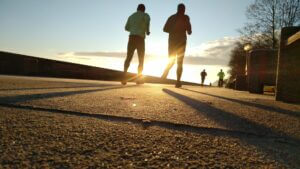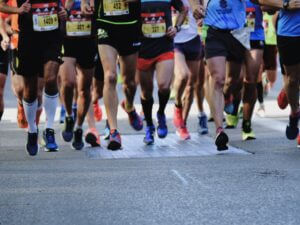Barefoot running on a treadmill has been gaining popularity in recent years as a way to improve foot strength, and balance, and reduce the risk of injury. It is a natural and minimalist approach to running that allows your feet to move freely without the restriction of traditional running shoes.
While many fitness enthusiasts have embraced this trend, others are still skeptical about its benefits and potential drawbacks. In this blog post, we will delve into the pros and cons of barefoot running on a treadmill, explore the science behind it, and provide practical tips on how to minimize the risks and maximize the benefits.
Whether you are a seasoned runner or a beginner, this guide will help you make an informed decision about incorporating barefoot running into your fitness routine.
Table of Contents
Pros of Barefoot Running on a Treadmill
Barefoot running on a treadmill has several advantages that can improve your running performance and overall foot health. Here are some of the main benefits:
1. Improves foot strength and balance
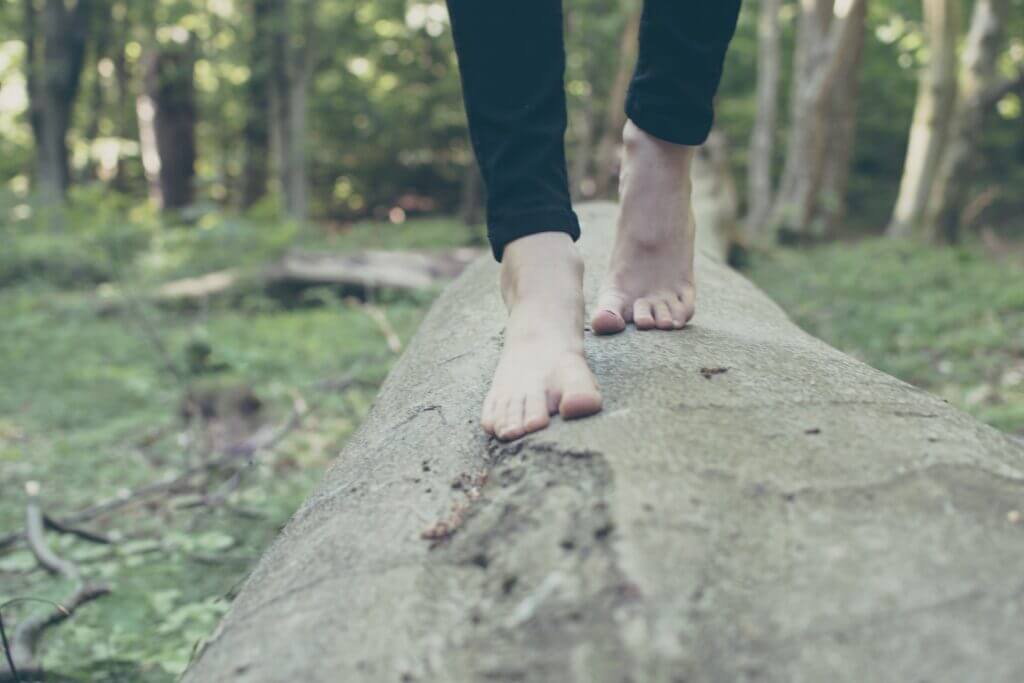
Running barefoot on a treadmill can help improve your foot strength and balance. When you run with shoes, your feet are often constrained in a rigid, padded environment, which can weaken the muscles and tendons in your feet over time.
Barefoot running on a treadmill provides an opportunity for your feet to move and flex in a natural way, which can help build strength in the muscles and tendons.
In particular, running barefoot on a treadmill can help strengthen the small muscles in your feet and toes. These muscles are often neglected when wearing shoes, but they play a critical role in stabilizing your foot and providing support during running.
Strengthening these muscles can help improve your balance and stability, which can translate into better performance and reduced risk of injury.
Furthermore, barefoot running on a treadmill can help improve the proprioception of your feet. Proprioception is the sense of your body’s position and movement, and it is an important aspect of running performance.
When you run barefoot on a treadmill, you can feel the ground beneath your feet and adjust your stride and foot placement accordingly. This increased sensory feedback can help improve your gait and reduce the risk of injury.
It’s important to note that while barefoot running on a treadmill can be beneficial for foot strength and balance, it is important to start gradually and build up slowly. Running barefoot on a treadmill can put extra stress on the muscles and tendons in your feet and legs, so it is important to allow your body to adapt gradually to the new demands.
Beginning with short distances and increasing gradually over time can help minimize the risk of injury and maximize the benefits of barefoot running on a treadmill.
2. Reduces the risk of injury
Running is a high-impact activity that can put a lot of stress on your joints, particularly your ankles, knees, and hips. Traditional running shoes are designed to provide cushioning and support to absorb some of this impact and reduce the risk of injury. However, some experts believe that these shoes may actually increase the risk of injury by altering your natural foot mechanics and reducing your proprioception, which is your sense of your body’s position and movement.
Barefoot running on a treadmill, on the other hand, allows for a more natural foot movement and increased sensory feedback. This can help you develop a better running form, which can reduce the impact on your joints and reduce the risk of injury. By running barefoot, you can engage the small muscles in your feet and toes that are often neglected when wearing running shoes. Strengthening these muscles can help improve your balance and stability, further reducing your risk of injury.
In fact, a study published in the journal Nature found that people who run barefoot have a more efficient foot strike pattern that is associated with a lower risk of injury. The researchers found that barefoot runners tend to land on the ball of their foot or the middle of their foot, rather than the heel, which can reduce the impact on the joints.
Of course, it’s important to note that barefoot running on a treadmill does come with some risks. Running without shoes can increase the risk of blisters, calluses, and other foot injuries. Additionally, if you’re not used to running barefoot, it’s important to make the transition gradually to avoid overuse injuries.
Overall, while barefoot running on a treadmill is not without risks, it can be a safer and more efficient way to run for some people. If you’re interested in trying it out, it’s important to do so gradually and with caution to minimize the risk of injury.
3. Allows for natural foot movement
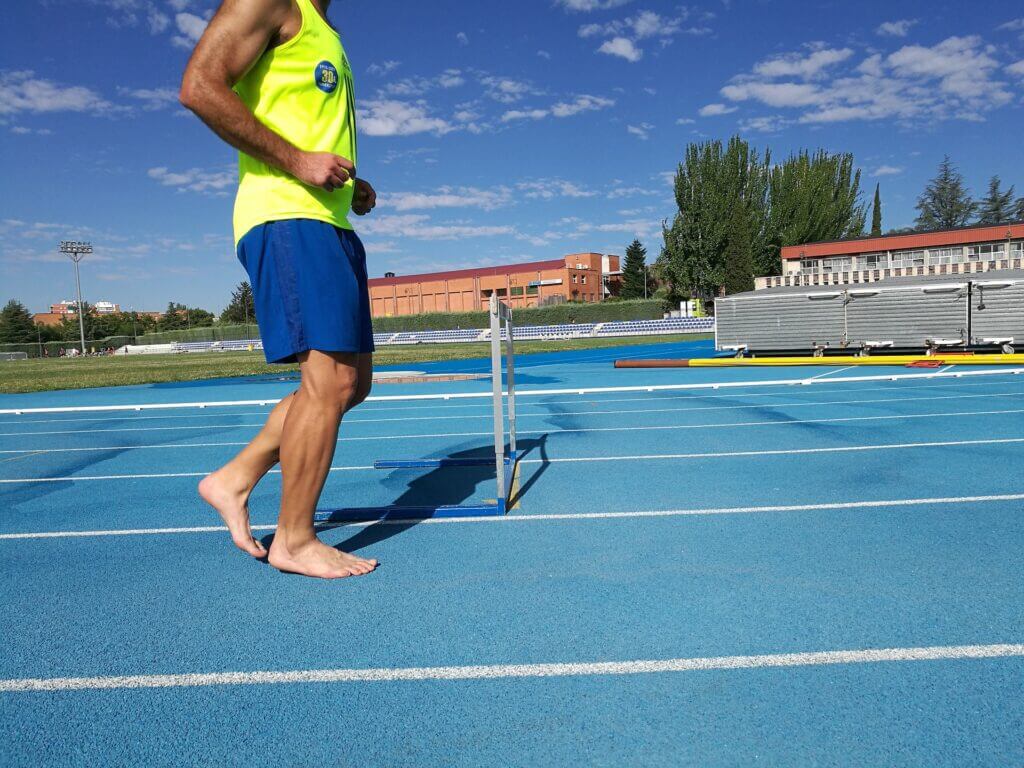
When you wear traditional running shoes, the thick and cushioned sole can limit the natural movement of your foot, preventing it from moving and flexing naturally. Over time, this can lead to a reduction in foot strength and mobility, which can increase the risk of injury.
On the other hand, barefoot running on a treadmill allows your foot to move and flex naturally, which can help improve your gait and reduce the risk of injury. This is because running barefoot on a treadmill forces you to use the small muscles in your feet and toes that are often neglected when wearing running shoes.
When you run barefoot, your foot is free to move and flex in response to the surface you are running on. This can help improve your balance and stability, as well as your overall foot and leg strength.
Additionally, barefoot running can help promote proper foot mechanics, as your foot is allowed to move naturally and adjust to the terrain.
By allowing for natural foot movement, barefoot running on a treadmill can help improve your foot mechanics and reduce the risk of injury. However, it is important to note that transitioning to barefoot running should be done gradually and with caution, as sudden changes in footwear can increase the risk of injury.
It is recommended to start with short periods of barefoot running on a treadmill and gradually increase the duration and intensity as your feet adapt to the new stimulus.
4. Increases sensory feedback
When running barefoot on a treadmill, you are able to feel the texture, temperature, and other sensory information about the surface beneath your feet. This sensory feedback allows you to make adjustments to your stride and foot placement, which can help reduce the risk of injury and improve your overall performance.
For example, if you feel a rough patch on the treadmill surface, you can adjust your stride to avoid it and reduce the risk of blisters or calluses. Similarly, if you feel a cool spot on the surface, you can adjust your foot placement to ensure proper traction and stability.
In addition, the increased sensory feedback can help you maintain better form and technique while running. By feeling the ground beneath your feet, you can better understand how your body is moving and adjust your posture and stride accordingly.
Overall, the increased sensory feedback from barefoot running on a treadmill can help you improve your form, reduce the risk of injury, and optimize your performance. It is important to gradually adapt to barefoot running and listen to your body’s signals to avoid overexertion or injury.
Cons of Barefoot Running on a Treadmill
While barefoot running on a treadmill has many benefits, there are also some potential drawbacks to consider before diving in. Here are some of the cons of barefoot running on a treadmill:
1. Increased Risk of Blisters and Calluses
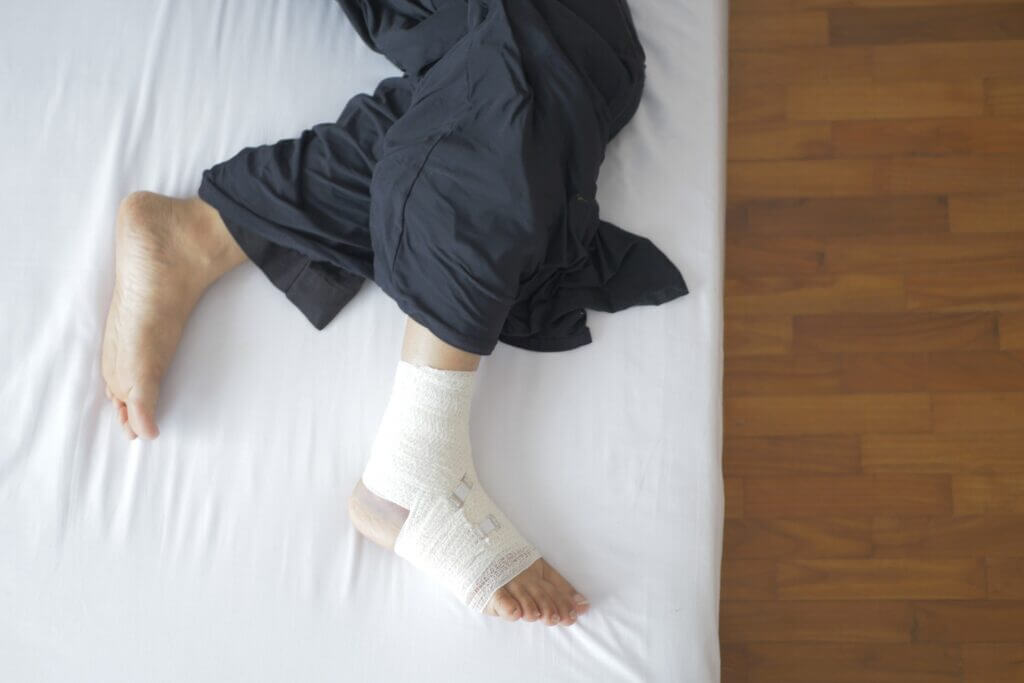
One of the potential drawbacks of barefoot running on a treadmill is the increased risk of blisters and calluses. Running barefoot on a hard surface like a treadmill can cause friction between the soles of your feet and the surface, which can lead to the development of blisters and calluses.
Blisters are fluid-filled pockets that form on the skin as a result of friction, pressure, or heat. They can be painful and uncomfortable, and if they pop or break, they can increase the risk of infection. Calluses, on the other hand, are thickened areas of skin that form as a protective response to repeated friction or pressure. While calluses are not usually painful, they can become uncomfortable or unsightly if they become too thick or cracked.
When you’re running barefoot on a treadmill, there are a few factors that can increase the risk of blisters and calluses. First, the hard surface of the treadmill can create more friction between your feet and the surface than you would experience outdoors on a softer surface.
Additionally, if you’re not used to running barefoot, your feet may not have developed the necessary calluses to protect against friction. Finally, factors such as moisture, heat, and poor-fitting footwear can also increase the risk of blisters and calluses.
To minimize the risk of blisters and calluses when running barefoot on a treadmill, it’s important to take a few precautions. First, make sure you’re running on a clean, dry surface to reduce the risk of moisture-related friction. Additionally, start with short, low-intensity runs to allow your feet to gradually build up calluses over time. You can also use products such as blister pads or foot lubricants to help reduce friction and protect against blisters and calluses.
2. Can Be Uncomfortable for Those Not Used to It
Running barefoot on a treadmill can be an uncomfortable experience, particularly for those who are used to running with the support and cushioning of regular running shoes. Without the padding and structure of shoes, your feet will be absorbing the impact of every step, which can be jarring and uncomfortable if you’re not used to it.
Additionally, running barefoot on a treadmill can also be uncomfortable due to the lack of grip and stability.
Running shoes are designed to provide traction and grip, which can be particularly important when running on a treadmill that may be slick or slippery. Without the proper grip and stability, you may feel unsteady or off-balance, which can make your workout more challenging and uncomfortable.
However, with time and practice, many runners find that the discomfort of running barefoot on a treadmill subsides as their feet adapt to the new sensation.
As your feet become stronger and more accustomed to the barefoot experience, you may find that your workouts become more comfortable and enjoyable.
To help alleviate discomfort when starting out, it’s important to ease into barefoot running on a treadmill gradually. Start with short, low-intensity workouts and gradually increase the duration and intensity as your feet become stronger and more accustomed to the experience.
It’s also a good idea to focus on proper running form, which can help minimize the impact on your feet and reduce the risk of discomfort and injury.
Finally, investing in a good pair of barefoot running shoes can also help make your workouts more comfortable and enjoyable. These shoes are designed to provide a minimal amount of support and protection while still allowing your feet to move naturally and flexibly. With the right shoes, you can enjoy the benefits of barefoot running on a treadmill without sacrificing comfort or safety.
3. Requires a Period of Adaptation
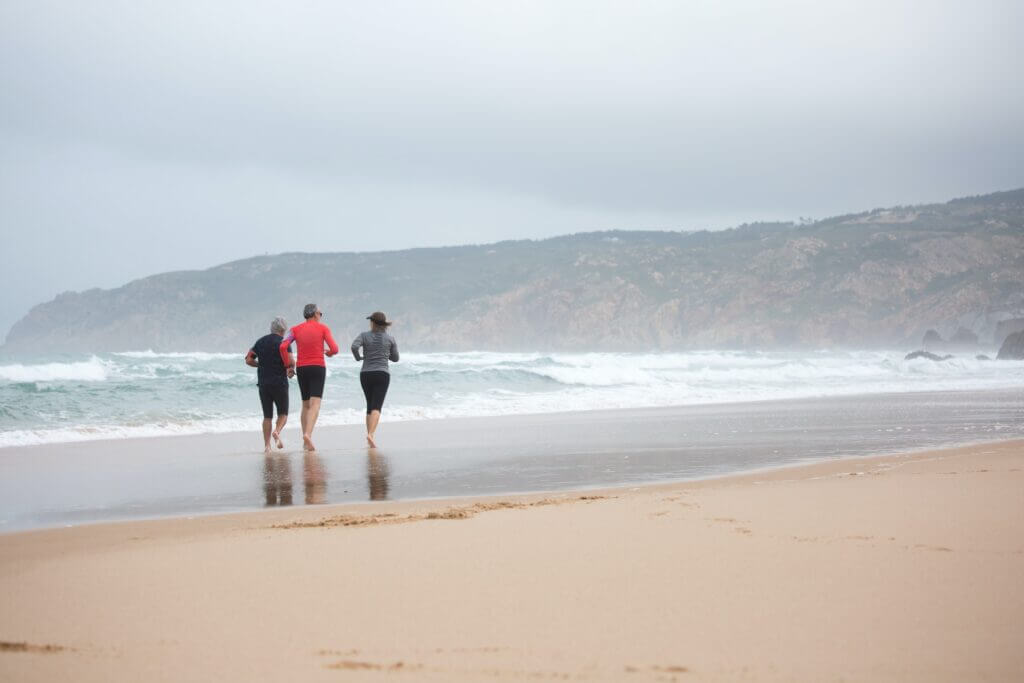
Running barefoot on a treadmill requires a period of adaptation, as it is a different experience compared to running with shoes on or running barefoot on other surfaces. The hard and smooth surface of a treadmill can be unforgiving on the feet and may cause discomfort, soreness, or even injury if you’re not used to it.
The adaptation period is important because it allows your body to adjust to the new demands placed on your feet and lower body. During this period, your muscles and connective tissues will need time to strengthen and adapt to the new movement patterns and surface. This can take several weeks or even months, depending on your fitness level, running experience, and other factors.
It’s important to start slowly and gradually increase the duration and intensity of your barefoot treadmill running sessions. This will help your body adapt and minimize the risk of injury or discomfort. It’s also important to listen to your body and adjust your routine as needed. If you experience pain or discomfort during or after a barefoot treadmill running session, take a break and allow your body to recover before resuming.
During the adaptation period, you may want to consider using a softer surface, such as a yoga mat or a padded surface, to reduce the impact on your feet. You can also use minimalist shoes or toe socks to provide some protection and cushioning while still allowing for a more natural foot movement.
Overall, while the adaptation period can be challenging, it’s an important step in reaping the benefits of barefoot treadmill running safely and effectively. By starting slowly and gradually building up your tolerance, you can enjoy the many benefits of barefoot running on a treadmill without risking injury or discomfort.
4. May Not Be Suitable for People with Certain Foot Conditions
Barefoot running on a treadmill may not be suitable for people with certain foot conditions, such as plantar fasciitis, flat feet, or high arches. Here’s a more detailed explanation of why this is the case:
- Plantar Fasciitis: Plantar fasciitis is a common foot condition that causes pain and inflammation in the heel and arch of the foot. Running barefoot on a treadmill can exacerbate this condition, as it places additional strain on the plantar fascia, the band of tissue that connects the heel bone to the toes. This can cause further inflammation and pain.
- Flat Feet: Flat feet are a condition in which the arches of the feet are low or nonexistent. Running barefoot on a treadmill can be particularly challenging for people with flat feet, as it puts extra pressure on the feet and can lead to overpronation (inward rolling of the feet), which can cause pain and discomfort in the feet, ankles, and knees.
- High Arches: High arches is a condition in which the arches of the feet are higher than normal. Running barefoot on a treadmill can be difficult for people with high arches, as it puts extra pressure on the balls and heels of the feet, which can cause pain and discomfort.
If you have any of these foot conditions, it’s important to consult with a healthcare professional before starting a barefoot running routine on a treadmill. They may recommend exercises or stretches to help improve foot strength and flexibility, or suggest alternative forms of exercise that are better suited to your individual needs.
In some cases, wearing minimalist shoes designed for barefoot running can help provide some of the benefits of barefoot running while still providing some support and cushioning for people with certain foot conditions.
However, it’s important to choose shoes that are specifically designed for barefoot running and to gradually transition to using them to prevent injury.
While these cons may seem like significant drawbacks, it’s important to remember that they can be minimized with proper technique, preparation, and equipment.
With the right approach, the benefits of barefoot running on a treadmill can far outweigh the potential drawbacks.
How to Minimize the Risks and Maximize the Benefits
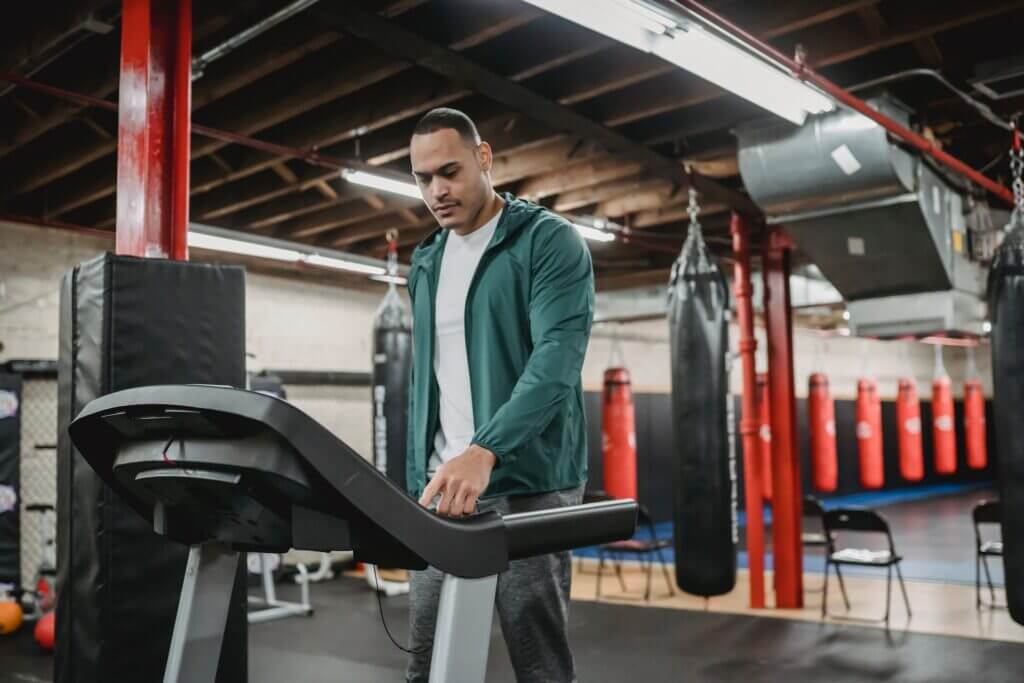
While barefoot running on a treadmill has its benefits, there are also some risks involved. Here are some tips to help you minimize the risks and maximize the benefits of barefoot running on a treadmill:
A gradual transition from regular running shoes to barefoot running on a treadmill
It is important to gradually transition from regular running shoes to barefoot running on a treadmill. Start by incorporating short barefoot intervals into your regular treadmill workout routine and gradually increase the duration and intensity over time. This will allow your feet to adjust gradually and reduce the risk of injury.
Proper warm-up and stretching
Before starting your barefoot running session on a treadmill, it is important to warm up your feet and stretch your leg muscles. This will help to increase blood flow to your feet and reduce the risk of injury.
Using a suitable treadmill surface
It is important to use a suitable treadmill surface for barefoot running. Look for a treadmill that has a shock-absorbing deck or one that has a cushioned surface. This will help to reduce the impact on your feet and prevent injuries.
Listening to your body and adjusting accordingly
When starting barefoot running on a treadmill, it is important to listen to your body and adjust accordingly. If you experience pain or discomfort, stop immediately and allow your feet to rest. Over time, you will gradually build up the strength and endurance needed for longer barefoot running sessions.
By following these tips, you can minimize the risks and maximize the benefits of barefoot running on a treadmill. Remember to start slowly, listen to your body, and gradually increase the duration and intensity of your barefoot running sessions over time.
FAQ
Is it OK to run barefoot on a treadmill?
It is generally okay to run barefoot on a treadmill, but there are some factors to consider before doing so.
On the positive side, running barefoot on a treadmill can improve foot strength and balance, reduce the risk of injury, and provide a more natural foot movement. Additionally, it can increase sensory feedback, which can help improve running form and efficiency.
However, there are also some potential drawbacks to running barefoot on a treadmill. For example, running without shoes can increase the risk of blisters and calluses. It can also be uncomfortable for people who are not used to it, and it requires a period of adaptation. Furthermore, some people with certain foot conditions may find it uncomfortable or even painful to run barefoot.
If you are interested in running barefoot on a treadmill, it is important to start slowly and gradually increase your time and intensity. Additionally, it is important to listen to your body and adjust your technique or footwear as needed. For some people, it may be beneficial to use minimalist shoes that mimic the feeling of barefoot running while providing some protection and support.
Ultimately, the decision to run barefoot on a treadmill is a personal one that depends on your individual preferences and goals. If you are interested in trying it, it is important to do so safely and with caution.
Is walking barefoot on a treadmill good or bad?
Walking barefoot on a treadmill can have benefits such as improving foot strength, balance, and sensory feedback. However, it can also increase the risk of injury and foot irritation, particularly if the surface is unclean or if you have certain foot conditions.
Whether it is good or bad for you depends on your individual circumstances and goals, and it is recommended to start gradually and take steps to minimize the risks. If you have any concerns or foot conditions, consult with a medical professional before attempting barefoot walking on a treadmill.
Do I need to wear shoes on a treadmill?
No, you do not necessarily need to wear shoes on a treadmill, as it is a personal choice. However, it is important to consider the potential risks and benefits of running barefoot versus wearing shoes.
Running barefoot on a treadmill can improve foot strength and balance, allow for natural foot movement, and increase sensory feedback. On the other hand, it can also increase the risk of blisters and calluses, be uncomfortable for those not used to it, and require a period of adaptation.
Wearing shoes on a treadmill can provide cushioning and support, protect your feet from blisters and calluses, and provide stability. However, some shoes may restrict natural foot movement and sensory feedback.
Ultimately, the decision to wear shoes or run barefoot on a treadmill should be based on personal preference and individual needs. It is important to consider the pros and cons of both options and make a decision that works best for you.
Is it okay to run on a treadmill with socks?
Yes, it is generally okay to run on a treadmill with socks. However, it’s important to keep in mind that wearing socks alone can increase the risk of slipping on the treadmill, especially if the socks are old or worn out. Additionally, running with socks alone may not provide enough support and cushioning for your feet, which can lead to discomfort or even injury over time.
If you prefer to run barefoot on a treadmill but are concerned about hygiene, you may want to consider using a pair of minimalist shoes specifically designed for barefoot-style running. These shoes can provide a similar feel to barefoot running while also protecting your feet from germs and bacteria on the treadmill’s surface.
Ultimately, the choice of whether to run on a treadmill with socks or barefoot-style shoes is a personal preference. It’s important to prioritize safety and comfort and to choose the option that works best for you.
Conclusion
In conclusion, barefoot running on a treadmill can have many benefits, such as improving foot strength and balance, reducing the risk of injury, and allowing for natural foot movement.
However, there are also some potential drawbacks, such as the risk of blisters and calluses, discomfort for those not used to it, and a period of adaptation required. To minimize the risks and maximize the benefits, it is important to gradually transition from regular running shoes to barefoot running on a treadmill, properly warm up and stretch, use a suitable treadmill surface, and listen to your body and adjust accordingly.
By following these guidelines, you can enjoy the benefits of barefoot running on a treadmill while minimizing the risks. As with any exercise program, it is important to consult with your healthcare provider before starting a new fitness routine.

